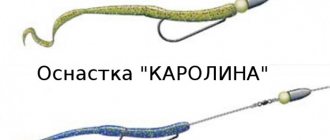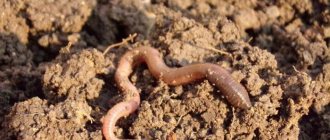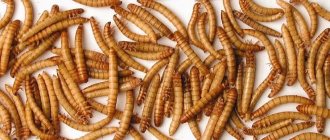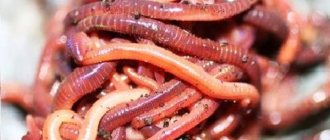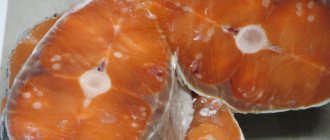Let's start with the fact that not every worm that has found refuge in fish is harmful and dangerous to human health, although there are a lot of fish worms in nature. If you notice red worms in fish meat, be very careful and try to remove them as much as possible before you start cooking.
According to recent research in this direction, it has been established that almost all commercial fish are invasive. Even sea fish are susceptible to this scourge, although many mistakenly consider it safe due to the high salt content in sea water. Marine fish contain anikasids, cestodes and a number of other types of fish helminths, as well as nematode roundworms or flat flukes.
What to do in such a situation? To get started, we recommend reading this article. This article describes in detail methods of controlling parasites. We also recommend that you consult a specialist. Read the article >>>
What to do if worms are found in red fish. What to do? It is better to return such fish to the seller, but you can also subject it to thorough heat treatment or freezing. In this case, up to 99% of helminths die. But first try to remove worms from the fish meat and its intercostal space, since even completely safe worms are very unpleasant to eat.
Worms in fish: how harmful they are to humans and their bodies
Let's start with the fact that not every worm that has found refuge in fish is harmful and dangerous to human health, although there are a lot of fish worms in nature. If you notice red worms in fish meat, be very careful and try to remove them as much as possible before you start cooking.
According to recent research in this direction, it has been established that almost all commercial fish are invasive. Even sea fish are susceptible to this scourge, although many mistakenly consider it safe due to the high salt content in sea water. Marine fish contain anikasids, cestodes and a number of other types of fish helminths, as well as nematode roundworms or flat flukes. What to do if worms are found in red fish. What to do? It is better to return such fish to the seller, but you can also subject it to thorough heat treatment or freezing. In this case, up to 99% of helminths die. But first try to remove worms from the fish meat and its intercostal space, since even completely safe worms are very unpleasant to eat.
In almost all known cases, red worms are present in fish. These parasites are considered the most common and widespread. They feel great in any fish, localizing in the intestines, intercostal spaces, gills, muscles, tail part and even in the eyes. They live for a very long time and are quite resistant to weak heat or salt treatment. Poorly fried and lightly salted dishes can bring a lot of trouble and serious health problems. Moreover, these parasites can remain in the human body for quite a long time - some species can spoil your health for about forty years.
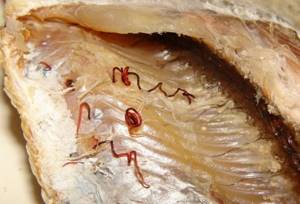
True, with proper heat treatment, red worms in fish become harmless. But it is better to do without this kind of experiment, because poisoning can have very serious consequences. The most dangerous are very small red worms that are located in the muscles of the fish. Quite often, such unpleasant surprises began to be discovered among the inhabitants of natural bodies of water. While in previous years cases of fish infestation with parasites were very rare, one might say isolated, nowadays red worms in fish are found alarmingly often. Whether the ecology or the influence of space is to blame for this is not important for the average person. It is important to know in which fish you can find helminths that are dangerous to your health.
Classification of worms and their description
Infection of fish with various parasites, not only red ones, is an almost universal phenomenon. The most common classes of parasites present are:
- Eustrongylides, representing the genus of Dioctoform nematodes. These whitish-red or completely red thin worms in fish consistently parasitize the stomachs of birds, getting there with the fish they eat. The latter acts as an intermediate carrier of this type of parasite. Such worms are very thin and long, reaching a length of 50 mm and are localized in the abdominal zone of the fish, muscles, stomach, intestines, testes and liver. If there are too many larvae, they cause hyperemia and hardening of the stomach tissues of catfish, perches, and also lead to the destruction of the kidneys of sturgeon fish. Red thin worms in fish lose their harmful properties with sufficiently intense heat treatment. The fish meat becomes edible and can be safely used as food. However, it is still better to remove pieces from the fish in which eustrongylides is located.
- There are also other long red worms in fish that are dangerous to humans. They are similar to filomentra, but longer and brighter in color. These individuals reach a record length from fifteen centimeters to a whole meter. They are found in freshwater bodies of water and pose a great danger to humans. This type of helminth has been studied very little, and there are no clear recommendations on how to effectively treat the diseases caused by it in humans. To avoid a disappointing outcome from such a meal, it is better to refrain from eating fish with such inclusions.
Philometra in fish: what kind of parasite is it?
Philometra are long, thin, red worms in the body of a fish. Most often they can be found in the fins and head area. These parasites cause the disease phylometroidosis, which is not dangerous to humans. It infects such river inhabitants as pike, carp, bream, carp, crucian carp and perch.

If there are red worms in perch fish lurking in the muscle tissue, know that they can cause weakening of the muscles and the human body. And although phylometra is not dangerous for humans, fish suffering from phylometroidosis becomes loose and lethargic, and its meat becomes tasteless.
Red worms can often be found in dried fish. Dried perch is also susceptible to dominance by these parasites, and even if the salting and drying technology is carried out correctly, these helminths, even after their death, do not leave captured areas of the fish. In principle, as already mentioned, phylometers are safe for people, and salt makes its contribution to the fight against this parasite, but it is better not to take risks by eating affected parts of the fish.
Clonorchiasis
A disease caused by a parasite such as the Chinese fluke can have quite serious complications:
- yellowness of the skin due to liver damage;
- Cirrhosis/liver abscess.
If a child contracts clonorchiasis, in addition to damage to internal organs, significant developmental delays are possible.
In order to avoid the listed diseases, which are quite dangerous to human health and life, you should only eat fish that has undergone high-quality heat treatment.
Advice from an experienced ichthyologist
The most common “guests” are tubular small red worms in fish, up to 5 cm in length. They can be found in perch, goby and walleye. It is quite possible to eat fish infected with them, after first clearing its meat of parasites.
According to information from candidate of biological sciences Roman Novitsky, an experienced ichthyologist, such fish must be thoroughly cleaned and properly prepared. If you fry it, then you should do this for at least 10 minutes so that the helminths come out, and if you decide to salt it, then keep the fish carcass in a salt solution for at least two days. According to him, when frozen, these parasites do not die and after thawing they become completely viable.
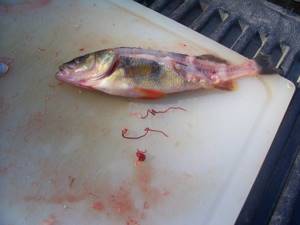
Novitsky also advises paying attention to herring, which at the moment, according to statistics, is 60% infected with helminths. The cleanest fish, according to the ichthyologist, are catfish, mackerel and tuna, which live in the open sea. But even here the presence of parasites could not be avoided. It’s just that there aren’t so many of them compared to other types of fish, and they don’t catch the eye. For this reason, carefully process all fish that are intended for your food, just in case.
How to avoid getting infected with parasites?
To the question of whether pike suffers from opisthorchiasis, both fishermen and scientists will give a negative answer. But pikes may still have larvae in their digestive tract that got there when they ate infected cyprinids. If the pike intestinal walls are accidentally damaged, the larvae will penetrate into the meat. In addition to opisthorchiasis, fish can be infected with helminths that pose a danger to humans.
When handling a raw carcass, it is advisable to wear thin rubber gloves. While cleaning and cutting, do not smoke, touch your lips or touch prepared foods (bread, etc.). After finishing working with raw pike, thoroughly wash your hands, knife, and cutting board.
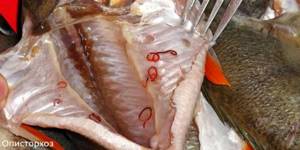
To avoid infection and the development of disease in the human body, you need to properly prepare pike:
- Salting is carried out by generously sprinkling the carcasses with salt. The crystals should also get inside the pike’s abdomen. Large specimens need to be flattened, cutting along the spine. The salting period is at least 5-7 days.
- Drying of pike carcasses can be done after thorough salting. To remove excess salt, the fish is washed and soaked.
- Fish should be frozen at a temperature no higher than -28°C. After freezing for 20 days, it becomes safe; the larvae of most parasites die.
- Fresh fish should be cooked for at least 20 minutes. To ensure that the meat is well cooked, the carcasses are cut into pieces of 150-200 g.
- Fry fresh pike for 20-25 minutes, cutting into pieces no more than 5 cm thick. Frozen fish must first be completely defrosted so that it warms up evenly when frying.
- Baked fish should be cooked or hot smoked for 20-30 minutes, until the meat comes away from the bones.
- Bake pike pies for 40-60 minutes.
To be completely sure that dried or smoked pike is safe, it is best to buy fresh fish and prepare your own snacks. You should not eat raw fish dishes.
Are there parasites in red fish?
Red fish is the most delicious and popular. There is an opinion that it is impossible to get infected with helminths from sturgeon breeds due to their noble origin. Today this opinion is largely refuted. And when eating the meat of this class of fish, there is a real chance of picking up one or another parasite. Try not to eat this fish raw or cooked in violation of the recipe and processing time - you can cause your body quite serious problems with poisoning.
The main suppliers of helminths include pink salmon, salmon and trout. What worms are present in red fish (photos of some are presented below for clarity), and how dangerous are they for humans?

Red fish dishes are not uncommon in modern cuisine. They are usually timed to coincide with major holidays or serious social events. Imagine the amazement of the eater if he notices that there are transparent worms in the red fish. And yet, this kind of thing happens. Therefore, red fish is by no means a guarantee of the absence of worms.
Many gourmets love dishes made from raw or half-raw pink salmon, chum salmon, and salmon, and don’t even think that along with the amazing-tasting delicacy, one of the parasites can enter the body. Thus, in Japanese cuisine, it is customary to prepare fish dishes with a minimum processing time and amount of salt, so as not to spoil the true aroma and taste of the product, as well as to preserve minerals and vitamins.
If worms or their eggs enter the human digestive tract, he will experience a rash on the skin, severe digestive upset, nausea, vomiting and many other signs of fish poisoning.
What is opisthorchiasis and how does it develop?
Sometimes thin worms (red worms, rolled into spirals) are found in the meat or caviar of fish when cutting. Based on this, housewives often conclude that the pike is opisthorchiasis and throw it away. But determining the presence of a parasite is not easy.
Opisthorchises (cat flukes) are small trematode worms that form a capsule about 1 mm in size in fish meat. Microscopic examination reveals a worm larva inside the capsule. They reach adult form only in the human or animal body. The size of the fluke by this time can reach 8−19 mm.
Ichthyologists believe that freshwater carp fish (ide, bream, crucian carp, carp, roach, etc.) are most susceptible to infection. Opisthorchis larvae enter their digestive tract from the body of an intermediate host (pond snail).
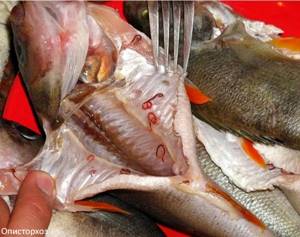
Eating contaminated fish can also cause harm to humans. The symptoms and treatment of opisthorchiasis have been studied for more than 200 years, the spread of the pathogen in Russia and in the world has been studied. The regions of Siberia and the countries of Southeast Asia are considered the most dangerous.
The disease in humans and animals belongs to the group of invasions that are caused by helminths (helminthiasis). Most often, the parasite affects the human liver and all organs of the hepatobiliary system, but there are cases of damage to the nervous or respiratory systems. The presence of pathogens can cause an acute or chronic disease - opisthorchiasis. Symptoms of the disease in humans appear as:
- pain in the right hypochondrium;
- nausea and bitterness in the mouth;
- heartburn, frequent stomach pain;
- pain in the left side of the lower chest, radiating to the shoulder.
Symptoms resemble those of stomach diseases, pancreatitis or hepatitis; in acute form, they are accompanied by fever, headaches and joint pains that last for 1-3 weeks. Sometimes the manifestations of the infestation are not pronounced, and the person lives with the parasite, excreting its eggs in the feces.
Flat ribbon-shaped parasites: how dangerous are they for humans?
Infection occurs through eating food with viable helminths. They are classified into two subclasses - round tubular worms and flat tape worms. Any red fish caught industrially in a free sea or river body of water contains parasitic worms.
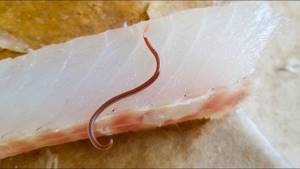
One of them, the wide tapeworm, is located in the larva, which is a thin translucent shell. They look like a grain of rice, and after the destruction of the capsule, transparent worms appear in the red fish. These parasites are found in fish eggs and inhabit their body and gastrointestinal tract. At the same time, they affect the liver and muscles of the fish, as well as its milt.
The white worms found in red fish - young tapeworms - are about 55 mm long and 2 mm wide. In appearance they resemble a white or milky transparent tape, which, when entering the human body, can grow to gigantic sizes - up to twelve meters. Tapeworms live 15 years or longer and throughout their lives they infect the host (human) body, destroying its internal organs.
A person infected with this parasite experiences severe weakness, headaches, loose stools, poor appetite, nausea, heartburn, belching and vomiting. Skin itching and rash may occur. The larvae of these helminths can survive even with very long processing of the carcass. Even freezing will not help, because the larvae are viable at a temperature of 4 degrees. They can only be destroyed with salt if the salting continues for several (3-5) days.
Round tubular parasites in red fish - are they dangerous to humans?
Round tubeworms also bring a bad disease to people - anisakiasis. Parasites such as anisakids are present in each of the marine fish, but chum salmon is most preferred, followed by salmon and pink salmon. These pathogens affect almost all fish organs - the body, muscles, liver, milk, spleen, eggs and gastrointestinal tract. These parasites have a spiral shape and reach a length of 5 cm. The color of the worm is whitish, brown or cream. Their introduction into the mucous membranes of the human stomach and intestines is a direct path to intestinal ulcers. The implantation process is accompanied by swelling and ulcers. Often the presence of this helminth causes intestinal obstruction and also disrupts the functioning of the gallbladder, liver duct and pancreas.
What harm is possible for a person?
Parasites are localized in the liver, gall bladder and pancreas. Thanks to the suckers on the body, the worms attach to the walls of organs, thereby damaging the tissue structure. The process is accompanied by inflammation and disruption of the urinary system.
The following symptoms are typical for infection:
- feeling of nausea and vomiting;
- heartburn;
- feeling of discomfort on the right side under the ribs;
- stool disorder;
- decreased or complete lack of appetite;
- periodic temperature jumps up to 39 °C;
- sometimes jaundice appears.
Due to the toxic effect of the parasite on the body, a person experiences headaches, muscle weakness, fatigue, and rapid heartbeat.
In people prone to allergies, rashes appear and immune defenses decrease.
When they remain in human organs for a long time, parasites cause inflammation in a chronic form, which leads to diseases: cirrhosis, hepatitis, the appearance of fibrous tissue, and liver cancer.

What to do to protect a person from the consequences of fish helminths?
Is it possible to eat fish infected with parasites? Sanitary standards classify such food as conditionally suitable. To make it completely safe, it is necessary to subject the fish to a special regime of heat treatment or salting. Do not eat raw or semi-raw fish - even a very refined taste will not compensate you for possible serious problems associated with infection with parasites. Here are some tips on how to choose and buy uninfected fish:
- Pink salmon and other sturgeon should be purchased in specialized stores, where they monitor its purity and subject it to the necessary industrial processing.
- Give preference to fish grown artificially and fed with artificial food.
- Freshly caught sea fish should be frozen immediately and defrosted only just before preparing the dish.
- If it is not possible to freeze, immediately gut and start cooking.
To protect fish, it can not only be boiled or fried, but also smoked, salted, marinated, but this must be done strictly in accordance with certain cooking technologies. For example, when frying or boiling a carcass, the cooking time should be at least 15-20 minutes. If the fish is quite large, then its meat must be separated from the ridge. When preparing a fish pie, bake the product in the oven for at least half an hour, and preferably longer.
Is Sfirion Lumpi dangerous for humans?
The appearance of an infected animal may be a reason to avoid preparing a fish dish, but Sphyrion lumpi does not pose a threat to human health. Before sale, fish are subject to sanitary inspection. If there are single lesions, it is frozen and put on sale, after removing the crustaceans. If helminths are found on internal organs, the fish is processed to obtain bone meal. At home, you should carefully examine the carcasses, remove hard capsules, and wash and heat treat the rest of the meat.
- How to grow eyelashes at home
- How to collect mercury from a broken thermometer correctly
- Causes of shortness of breath in humans. Shortness of breath - causes and treatment
Smoking and freezing fish
For high-quality smoking, fish up to two kilograms in weight are neutralized as follows:
- if the salt is hot, then you need to salt for 5-9 days and smoke at a temperature of 15-16 ° C;
- cook cold smoked fish with salting for one to two weeks and at a temperature of 5-6 °C;
- When dry salting, keep the fish for at least two weeks.
For this procedure, salt is taken in such quantity that its weight is at least 20 percent of the weight of the fish. That is, if you have a kilogram carcass, you will need 200 grams of it.
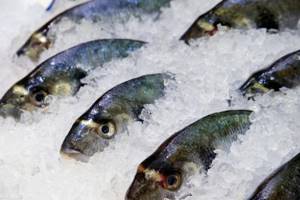
When red fish is frozen, all parasites die within two days if the fish is kept at a temperature of -20 °C. If you freeze it at a temperature of -27 °C, the period can be reduced to twelve hours. If you use the freezer compartment of a regular refrigerator with a temperature of -4 ° C, the fish must be kept in such conditions for at least a month.


